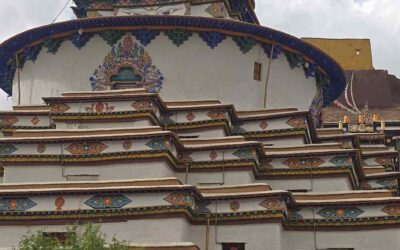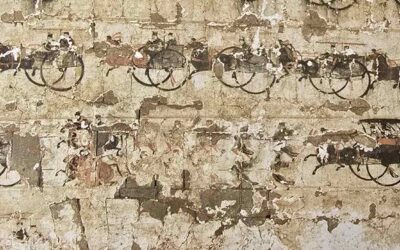The Adventures of the Mad Monk Ji Gong
The past few days I have been reading a novel about China’s most famous rogue monk. About the Monk Ji Gong, better known for his fondness for wine and meat than for his religious merits. His kindness and continuous desire to help people has nonetheless earned him the fervor of the people for nearly 1,000 years and elevated him, in popular religion, to the level of the great Buddhist deities.
As Victoria Cass notes in the introduction to this work, «Gong is a god of the streets, a drinker, a trickster, a city magician who lives among shopkeepers and street traders, among impoverished scholars, street hustlers and courtly prostitutes, all with stories of survival and bad luck. He is their exorcist, their avenger; he is a street hero, the patron saint of the common man.»
Ji Gong is believed to have been born in Hangzhou, during the Song Dynasty (960-1279). After spending a few years at the Monastery of the Hidden Soul on the outskirts of this city, he left the monastery, and became a wanderer, achieving renown – not in temples, but in wine stores.
His love for the people made him a legend, and as such he soon came to occupy a central place in a series of tales and stories that were transmitted orally, especially in the teahouses, stories that multiplied and expanded as city life in China expanded.»
The version that has been presented in English is the one by Guo Xiaoting in the 1890s, entitled The Complete Tales of Lord Ji, in which the materials of the folk literature were collected and edited.
The monk is one of the best representations of the trickster genre in China literature. A genre that includes numerous characters little known in the serious world of literary stories, but famous among the local population of China and that of its minorities. Among them we could include Afanti of the Silk Road peoples, Ayidan of the Naxi, Uncle Tomba of the Tibetans, and many others. All of them have played an important role in the religion and art of China.
The madness of Ji Gong has an obvious method. It invokes the elemental, involving the subversive and even anarchic sense of life. But this sense is dangerous when it comes to giving it a narrative form, and here the compiler, storyteller and editor has become more tied to the traditions of the folktale than to those of a novel as a work.
The narrative ends up becoming too long, the stories are sometimes entangled with some episodes that have less interest, which instead of maintaining the narrative tension waiting for a final result evaporates.Especially heavy from the point of interest of the reader is the long search and capture of the evil criminal Cloud Dragon Hua, as it continuously seems that it will be concluded, only to end up getting rid of this justice that symbolizes the monk.
On the other hand, the narrative resources that present the magical powers of the monk are very reduced. On the one hand we see that thanks to his clairvoyance he manages to be at the right moments where the crimes are going to happen, but on the other hand it is enough for him to continually resort to reciting the sacred syllable to stop and defeat his enemy. A little more imagination could have created a more fluid narrative and a more readable story.
Nevertheless, I think it is an interesting work for all those who want to know a little more about Chinese culture because it shows us this character who seems to be always hovering a little around religion and picaresque in all its fullness.
Ceinos Arcones, Pedro. Pícaros y listos de las minorías de China. 2014.
Guo Xiaoting. Adventures of the Mad monk Ji Gong. Ranslated by John Robert Shaw. Tuttle. 2014.
Last posts
Discover China’s Largest and Most Beautiful Salt Lake
Discover China’s Largest and Most Beautiful Salt Lake The development of tourism and transportation in China is bringing to light places that were previously very hard to access and virtually unknown. Some of these destinations are beginning to gain a certain...
A Giant Mandala in the Heart of Tibet
A Giant Mandala in the Heart of Tibet The Palkor of Gyantze is one of Tibet’s great marvels and a unique jewel of universal architecture and art. Its shape, scale, and iconography defy comparison with any other construction. Amidst some of the highest mountains of...
The Largest Collection of Paintings from ancient China
The Largest Collection of Paintings from ancient China No one doubts that pictorial art has existed in China since time immemorial. In fact, some painted pottery vessels, several thousand years old, continue to intrigue archaeologists who try to unravel their ultimate...







